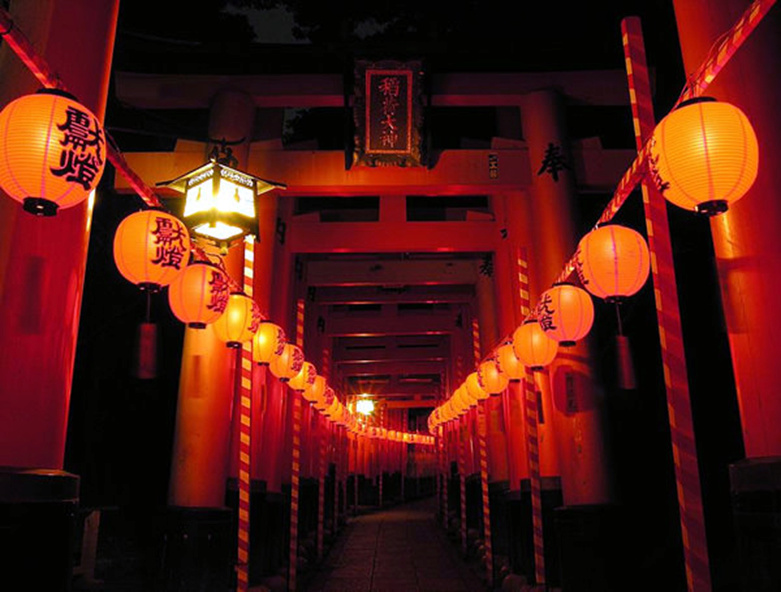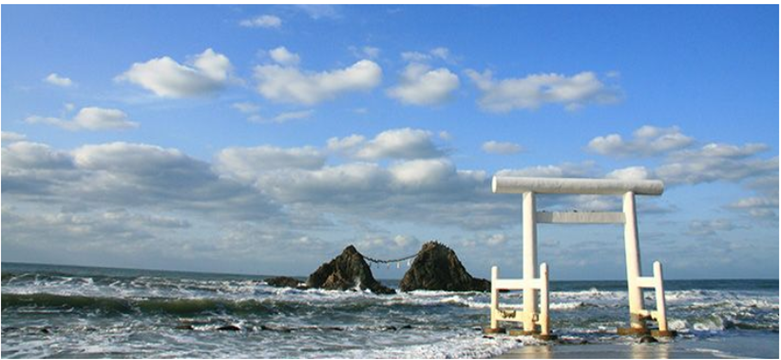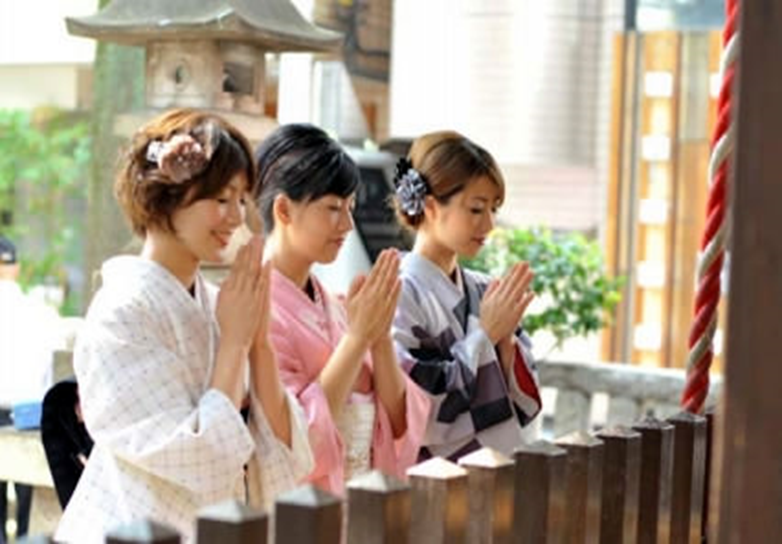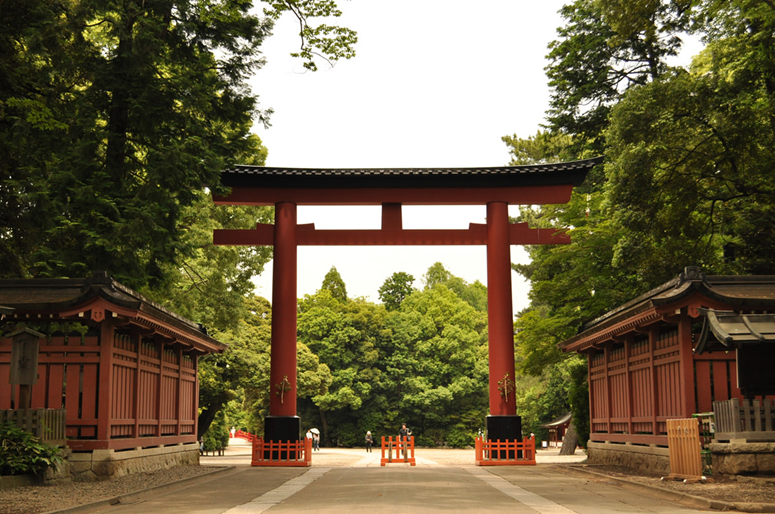?Do you know what the Japanese worship

When the word religion or religions is mentioned to any Japanese person, the concept of the phrase “kamisama” or “hotokesama” immediately comes to mind, especially since “kami” means a place of slavery, before Buddhism entered Japan. So, how do the Japanese “kami” view the gods from ancient times to the present day in the modern era?
Many words to express “God”
The word “God” is translated from English as “神,” which is pronounced “Kami” in Japanese, and this may be an error. The distinction between them must be clearer and more precise according to Japanese culture. Especially since the word “God” refers to the name of His Majesty “God” in monotheistic religions or heavenly religions, as they are called, as He is the only God in the world according to these religions, and therefore the word is written by writing a capital letter “G” in English.
If written in lowercase letters, then it would mean referring to any god in polytheistic religions. As for the word in the Chinese syllable “神,” it is included in other combinations, such as the word “soul” or “spirit,” and in one of its meanings it expresses the word “god,” but there are other words that express the word of a higher degree of gods. We can say that the gods in Japan have been embodied in natural phenomena since ancient times.
The gods that appeared in the books “Kojiki” and “Nihon Shiki” were, of course, the sun, the moon, the wind, the rain, the sea, large trees, or rocks, or in other words, any unusual person, animal, or plant became a god. The scientist Motoori Norinaga defines the Japanese god as follows: “Everything that gives a feeling of sympathy and stirs feelings is a god.” From this standpoint, for the Japanese, the land of Japan has abundant nature and has gods everywhere, and therefore Japan is the land of the gods. This expression may be an extreme patriotic expression, but it does not actually mean that.
Shintoism combines many elements
The Shintoism religion itself is a belief that has deified Japanese gods since ancient times. Due to the lack of records showing us what Shintoism was like in the past, we cannot know in detail about it as it was then. We also cannot be certain that there is something that we can call “Shintoism,” and perhaps this is due to the combination and mixing of many elements, for example:

The Japanese in the Jomon era lived a life of hunting and hunting and had traditions of nature worship.
In the Yayoi era, after the Japanese became acquainted with rice cultivation, they turned to worshiping small idols made of clay that symbolized the goodness of the land, and shamanism entered from the Korean Peninsula.
Bronze tools, weapons, and mirrors that arrived in Japan via China became objects used in religious rituals by the rulers.
In one way or another, the science of astronomical calendar, fortune-telling, and Chinese monastic thought were manifested in the celebrations and funerals of the rulers.
Each influential group or cooperative body believed in its own god and built temples to that god.
All of these elements were mixed to form the awareness of Shintoism, and the Japanese truly realized this difference after Buddhism entered Japan.

The concept of “God” results from a comparison with “Buddha”
Buddhism is a religion founded in India by Gautama Buddha (who was born in the fifth or sixth century AD) and has a huge amount of written texts in addition to its precise theories. The Buddhism that reached Japan is Chinese Buddhism because it came through China, and therefore the religious texts are written in kanji, that is, Chinese characters, as well as the religious organization and the method of its administration, which in turn was also in the Chinese style. Thus, the Japanese have a concept of “God” compared to “Buddha,” but we can highlight the points of difference between “Buddha” and God as follows. The first is that Buddha was originally a spiritually enlightened person, and upon his death, he got rid of the cycle of repeated births known as “samsara.” As for God in Shintoism, he differs from humans, but they are the ancestors of humans, and therefore some are alive and some are dead. The second is that Buddha was male and lived his life as a celibate person, while there are male and female gods and there is also mating between them.
Buddhist statues are made and placed in temples, but that does not mean that Buddha is there. In Shintoism, there is no form of God, and there is what is called “yorishiro” (which is the place where God is believed to come), but this does not mean that God is present in the temples. Perhaps the high-level culture that came from China - such as Buddhism, the legislative system, astronomical calendar systems, pharmaceuticals and construction - was a tool that enabled the ruling class to ensure prestige and power. How did Buddhism coexist with Shintoism?
The nobility's conversion to Buddhism and the Yamato government's policy toward the gods
The books “Nihon Shoki” and “Kojiki” were written in the eighth century. According to the two books, “Amaterasu” is the main goddess among the gods and the emperor, who is her descendant. The right to conduct religious rituals and rule was inherited by the emperor. As a result, any other authority was excluded from the rights to conduct religious rituals and exercise the powers of authority. Comparing Shintoism to other monotheistic religions, Shintoism was distinguished by giving the gods a rank subordinate to the goddess “Amaterasu,” while any other god was excluded, in a manner different from that of the children of Israel. Coexistence between gods here means coexistence between influential groups.
Buddha is also distinguished by the fact that he is independent of the gods and does not follow the goddess “Amaterasu.” Thus, the emperor monopolized the right to practice religious rituals, restructured Shintoism, and took it as a basis for power and rule. Other influential Buddhist groups also took similar measures in this regard. It soon became a nobility class that held lands (fiefdoms) and government positions. In general, the nobles embraced Buddhism and built Buddhist temples, hoping to enjoy eternal life in heaven or paradise. In order for every person who dies to become a Buddha after his death, and perhaps this is the point of difference from Shintoism. On the other hand, Shinto thought, in turn, was closer to the farmers who worked in the fiefdoms of the nobles and the fiefdoms of the temples. From another thought.

Differences in the concepts of life and death between Shintoism and Buddhism
?How did the Japanese see the world after death
There were several trends, including those who believed that after death a person would return to the mountain, and others who believed that he would go to (the abyss), the lower part of the earth. There was also a widespread belief that he might go beyond the sea. There was a vague idea that death was unclean and that the dead should go away to a place far from the village. Therefore, there was no room for belief in the idea of reincarnation found in Buddhism.
In addition, a concept gradually spread from China through Taoist and Buddhist concepts, according to which the dead become ghouls living in hell. The Emperor performed religious rituals for “Amaterasu” and other gods and ancestors, and during the performance of these rituals, Japan imitated Chinese rituals, and here Japan was unique in the point of performing religious rituals or worshiping ancestors as gods. It was believed that after the dead go away, they abandon filth, purify themselves, and become gods. Buddhism made the idea of reincarnation the main topic. After his death, a person moves to another life and lives again in this world, and so on. That is, there is no world of the dead and there are no souls. Here Buddhism differs from Shintoism completely. But what is the main reason for the spread of Buddhism?
From the Kamakura era to the Edo era, there was no distinction between Buddha and Shinto deities
There is a theory that emerged in the Heian era that says that the gods of Japan are originally Indian gods who changed their form and came to Japan. That is, it is the word “kami” and this has become a common custom since the “Kamakura” era. This means that worshiping Buddha is the same as worshiping gods and that there is no difference between a Shinto temple and a Buddhist temple. There is no need to differentiate or differentiate between Shintoism and Buddhism. From that era until the Edo era, this thought remained prevalent. Since a person becomes a god by dying, it is better for him to become a Buddha. The Buddhist doctrine of Godo freed itself from the idea of the reincarnation of souls.
He created a stage before a person becomes like Buddha, which is going to the paradise of God Amida, which is a stage that precedes the last stage by one step. After a person dies, he goes to the paradise of God Amida and then becomes like a Buddha in the end. Thus, the concept of life and death was formed among the Japanese, which still prevails in their thoughts until now. After his death, a person becomes a spirit that wanders around and wanders around for a period of time, then crosses the Sanzu River (something similar to the path or isthmus) and goes to the other world and becomes a Buddha or a god. As for someone who dies and is still attached to this world or harbors grudges against this world, he will not become like Buddha and will become a ghost. Whoever's actions are evil will enter Hell, and the Keeper of Hell will take care of his punishment. Souls return to our world from their world during the “Bon” period, and whoever dies is given a name and written on a small stone placed in front of the butsudan - and incense is offered to him. Perhaps all of these things indicate that if we think carefully, we will find that they are not related to Shintoism or Buddhism in any way, and that their content is contradictory.
Towards a nationalism that sanctifies the emperor
Christianity was banned in the Edo era and all Japanese were forced to convert to Buddhism to the point where a system emerged in which each household's religious orientation was recorded and the name of the temple they frequented was recorded. But the activities of Buddhist monks were limited to funeral ceremonies only. On the other hand, the samurai class encouraged following the teachings of Neo-Confucianism, as these new teachings spread among the upper class of farmers and merchants. Here, the Bakfu government did not pay attention to this matter due to its adopting a contradictory policy of forcing the Japanese to adopt Buddhism and encouraging the teachings of Neo-Confucianism at the same time, as the latter, that is, the Confucian teachings, are anti-Buddhist and deny the existence of souls and the idea of reincarnation as well. It also denies the idea of the existence of a hierarchy and the division of society into warriors and farmers. And workers and merchants, which was prevalent during the Edo era, especially since Neo-Confucianism says that every person who possesses knowledge has the right to be part of the ruling class.
It also focuses on the point of government loyalty, which prompted the emergence of thought that sanctifies the emperor as the de facto ruler of the country. That is, it contained in the subconscious the possibility of demolishing the ruling system in the Edo era. Please refer to the book “The Creators of the Gods and Modern Man” by Yamamoto Nanahi. From here, fundamentalist thought emerged, called for by Itō Gensai, who called for a return to the teachings of Confucianism, adding to it his fundamentalist thought. Motoori Norinaga, who is considered the father of this fundamentalist thought, wrote the book “Kōjiki-den,” in which he restructured Japanese society and stated that in that era There was a government and the people were subject to the emperor. This submission came from the teachings of Neo-Confucianism and is a natural feeling resulting from them. Thus began the idea of sanctifying the emperor and its transformation into a national idea.

Hirata's Shintoist thought opened the way to national Shintoism
Hirata Atsutani is considered the person who changed the Japanese perception of gods in the period between the late Bakfu era and the Meiji Restoration era. Hirata, who called himself a student of Motoori, stated that when a person dies, he does not become a Buddha and does not go to a far place, but rather becomes a special spirit. Whoever dies for the sake of the country becomes an immaculate spirit, a sublime spirit that protects the generations that come after him. It was said that this creative idea came to him through reading a translation of the Bible, which was forbidden to possess at that time.
Since every person who dies becomes a spirit, there will be no conflict with Buddhist rituals. Regardless, it has also become possible for anyone to pray for the souls of the dead in the Shinto style, and it has become possible to perform rituals for the souls of those who died in war. The military government of the Meiji era adopted Hirata Shinto thought and held rituals and prayers for the souls of all those who died for the country. In the second year of the Meiji era, a temple was established to console the souls of all those who died in the war, which was later known as the Yasukuni Shrine . It is an institution for commemorating religious rituals for the souls of all those who died for the country, died in war, or died an honorable death for the country in the Meiji era. It is a shrine for the common people who sacrificed their lives for the sake of the country and became gods after that. Yasukuni Shrine is called a “war shrine” in Western media, but this is a mistake. It is an institution equivalent to any monument to a revolution or a monument to the Unknown Soldier.
Both Hirata Shintoism and the Yasukuni Shrine had great influence in creating a modern people dedicated to the homeland, so there was a need to separate Shintoism from Buddhism. This is what actually happened in the late Bakfu era until the Meiji era reforms. Buddhist temples were also separated from Shinto temples by government order and anything ambiguous was rejected. With the Meiji reforms, government-sponsored nationalist Shintoism emerged. The Japanese Ministry of Education and Science expressed the position that Shintoism is integrated into the daily lives of the Japanese and therefore it is not a religion and forced all Japanese to adhere to national Shintoism.
Several other temples were also established after the Meiji era. For example, there is the Meiji Temple, which was established for Emperor Meiji, the “Noki” Temple, which was established for Noki Marisuke, who was a commander in the ground forces, and the “Tojo” Temple, which was established for Tojo Heihachiro, who was Commander in the Navy. Other temples were built to deify these figures to protect the country everywhere. A picture of the emperor was placed in schools so that students could salute it, and it was also imposed to salute by bowing in front of the imperial palace. This is the imperial education that deifies the emperor.

The occupying forces abolished National Shintoism after the war
After the end of World War II, the leadership of the occupying forces banned nationalist Shintoism. Yasukuni Shrine remained a civilian religious institution. The idea of sublime spirits and the idea that a person after his death becomes a god as they are remained prevalent among the Japanese. Perhaps there is no doubt that the Japanese themselves have no awareness of how they think about the gods or even the ability to describe this to a third party. The dilemma remains: what do the Japanese think and what do they believe, and this is a question that remains unanswered.
Source: websites

